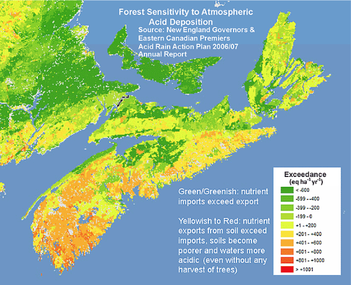|
0 Comments
More than 90% of the Crown forest leased by the Nova Scotia government for harvest is licensed for clearcut.
That’s right, 90%. But, the province’s Natural Resources Strategy, The Path We Share, a dubious title, clearly states that the percentage of clearcutting is to be reduced to no more than 50% by 2016. That’s this year. Now. So how does this work? 90%. 50%. Don’t ask the Healthy Forest Coalition for an explanation. Ask the Minister of Natural Resources, the Honourable Lloyd Hines.
Sometimes we may forget what it's all about...
Precious as jewels, fleeting as snow-flakes, yet ancient as the forest itself, these are the wildflowers of the Acadian forest. The trillium, the spring beauty, the bloodroot and lady slipper, once as abundant as the songbirds - now driven to the far recesses of their range. A priceless inheritance many Maritimers may never see, truly, the Treasures of the Old Forest. Take a look, "Treasures of the Old Forest"... 
Our soils are starved.
Forest soils over 50 per cent of our landmass are losing more nutrients than are being replaced by rainfall or natural weathering of rocks. Think acid rain. Our soils are shallow; they lie on slate, granite and felsic bedrock, and have no buffering capacity against industrial acid rain. Southwest Nova Scotia is in the worst shape. Now think clear-fells. Clear-cutting worsens the effects of acid rain by increasing nutrient losses. Remove wood and bark, stems and stumps and the land is laid bare – open to erosion and further leaching. It’s a no-win situation. No climate issues, no food production concerns – whether sustainable agriculture, denuded energy resources, runaway climate change – can be fixed without addressing the issues of forest health because forest soils are the foundation for everything. And that’s the thing. Our forests have a far higher and longer-term value than the crude market price placed on them by government. Productive soils, clean air, clean water, our social and economic well-being: all derive from healthy forests and a healthy forest floor. We need vision to sustain them, not the short-term asset stripping we see everywhere. Biologist David Patriquin outlines the dismal story in this article from the Chronicle Herald. Briefly:
The price paid in the aquatic realm began upstream. Salmon, brook trout, loons, sugar maple, salamander, songbirds: the losses are too high. The points of the ecosystem triangle – complex interactions between soils, forests and the wider environment – no longer match up. Stay the course and the future is grim. Heed the science and at least we have a chance. |
Blog Archives
October 2020
Blog Index
All
|
Photo used under Creative Commons from DaveW99999









 RSS Feed
RSS Feed
